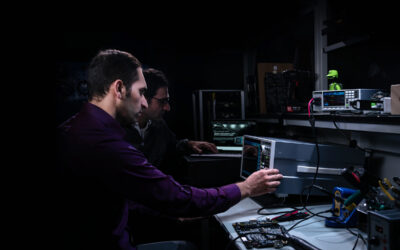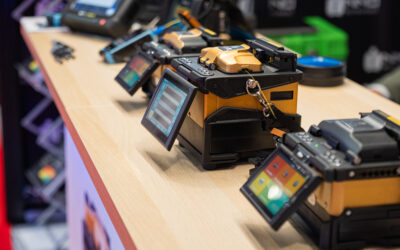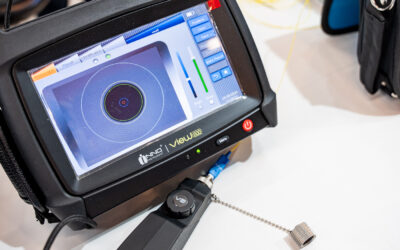Electrodes are a critical component of any fusion splicer, ensuring precise arc discharge for high-quality splices. Over time, electrodes wear down due to repeated use, impacting the splicing process and potentially compromising fiber connection quality. Knowing when and how to replace electrodes is essential to maintaining the efficiency and reliability of your device.
This guide will help you understand the importance of electrode replacement, how to monitor electrode usage, and step-by-step instructions to ensure your fusion splicer operates at its best.
Why Replacing Electrodes Matters
Electrodes generate the arc discharge needed to fuse fibers together. As their discharge count increases, their performance degrades, resulting in:
- Reduced Splice Quality: Worn electrodes can cause inconsistent splices, leading to higher insertion loss and signal degradation.
- Increased Error Rates: Old electrodes may produce uneven or insufficient arcs, increasing splice failure rates.
- Device Wear and Tear: Operating with worn electrodes can strain other components of the fusion splicer, potentially shortening its lifespan.
Replacing electrodes at the right time ensures consistent performance and helps avoid costly downtime or repairs.
Benefits of Timely Electrode Replacement
- Consistent Splice Quality: Ensures reliable, high-quality fiber connections with minimal signal loss.
- Reduced Downtime: Proactively replacing electrodes minimizes interruptions during operations.
- Extended Device Lifespan: Proper maintenance prevents unnecessary wear on other components.
- Enhanced Efficiency: Keeps your fusion splicer running smoothly, saving time and resources on projects.
When to Replace Electrodes
Recommended Replacement Threshold
Electrodes should be replaced when the current arc count exceeds 5500. This threshold ensures optimal splicing performance without risking degradation in splice quality.
Set Electrode Thresholds for Notifications
To make maintenance easier, fusion splicers can be configured to alert users when it’s time to replace electrodes:
- Electrode Caution
- Description: Displays a caution message when the discharge count exceeds the caution limit.
- Recommended Setting: 4500 arcs.
- Message: “Caution! Replace electrodes” will appear as a reminder to prepare for replacement.
- Electrode Warning
- Description: Displays a warning message when the discharge count exceeds the warning limit.
- Recommended Setting: 5500 arcs.
- Message: “Warning! Replace electrodes” will prompt immediate replacement to maintain splice quality.
How to Monitor and Replace Electrodes
Step 1: Access the Maintenance Menu
- Navigate to the [Maintenance Menu] on your fusion splicer.
Step 2: Check Electrode Arc Count
- Select [Replace Electrodes] and then [Electrode Thresholds].
- Review the current arc count and determine if replacement is needed based on the caution or warning levels.
Step 3: Replace the Electrodes
- Power off the fusion splicer.
- Carefully remove the old electrodes using the splicer’s electrode removal tool or as instructed in the user manual.
- Insert the new electrodes securely into place. Ensure they are properly aligned to avoid errors during operation.
Step 4: Reset the Arc Count
- After replacing the electrodes, reset the arc count in the [Electrode Thresholds] menu to restart the tracking process.
Tips for Effective Electrode Maintenance
- Always Use Genuine Parts
Use only manufacturer-recommended electrodes to ensure compatibility and performance.
- Keep Electrodes Clean
Dust and residue can affect electrode performance. Clean them regularly with a soft, lint-free cloth during routine maintenance.
- Monitor Arc Count Frequently
Regularly check the arc count to avoid unexpected interruptions during critical projects.
- Store Replacement Electrodes Properly
Keep spare electrodes in a clean, dry environment to prevent contamination or damage.
In addition to wear from repeated use, electrodes can also degrade prematurely due to improper storage conditions. Proper storage ensures that your electrodes remain in optimal condition, ready to deliver precise and reliable fusion splicing.
Replacing electrodes at the right time is a simple yet crucial step in maintaining your fusion splicer’s performance and ensuring the quality of your fiber optic splices. By setting caution and warning thresholds and following a regular maintenance routine, you can avoid unnecessary complications and keep your operations running smoothly.
If you’re unsure how to replace electrodes or need assistance, consult your device’s user manual or contact the INNO Instrument support team. Stay proactive with maintenance to get the most out of your fusion splicer and deliver top-quality results every time.
For more information about INNO Instrument products and maintenance tips, visit our website.






